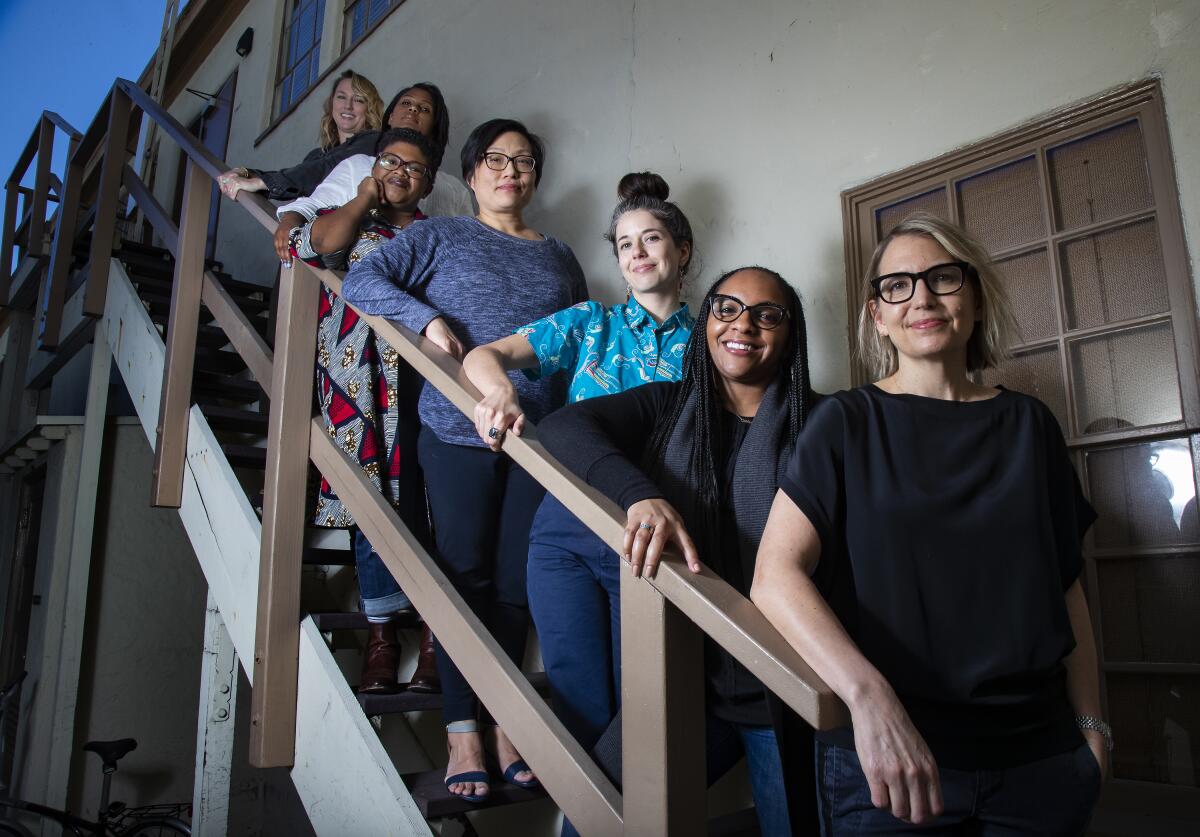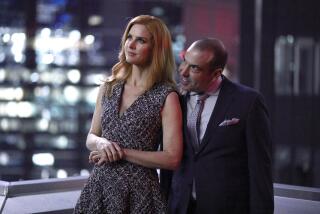Making inroads for women behind the scenes in television one step at a time

- Share via
“When I first started bringing women in as directors [on “Breaking Bad” and other TV shows], often that would be the first woman director the crew had worked with,” recalls “Better Call Saul” executive producer Melissa Bernstein. “And there would be these expectations that women can only behave in one or two ways. It wasn’t all sexist — but their experience with women in leadership positions was so small, they didn’t know what to make of it.”
The good news: The number of women working behind the scenes in television is growing. The bad news: It still ain’t great. In the 2018-19 broadcast television season, women made up just 31% of all creators, directors, writers, producers, executive producers, editors and directors of photography on comedies, dramas and reality programs, according to the annual “Boxed In” study from the Center for the Study of Women in Television and Film at San Diego State University. And if you think the relatively newer fields of cable (basic and premium) and streaming might have led to more progressive hiring, think again: It’s still 31%.
Still, it could be worse: TV is better for women than feature film, according to the center’s “Celluloid Ceiling” study. There, women comprise just 21% of those jobs, a number that’s remained steady since Martha Lauzen, executive director of the center, started keeping records in 1998.
Which leads to the big question of why TV is friendlier to women — and also why women still struggle to achieve parity, particularly in this extended golden age of programming?
To find out requires getting away from hard numbers and wading into more complicated waters. As Bernstein notes, it often is as much about entrenched expectations as outright sexism. A female hire often comes under so much scrutiny that second chances are rare to nonexistent.
“You’re not allowed failure as much as men are,” says “The Crown” director Jessica Hobbs. “You constantly have to succeed. Unless a woman is breakout successful, their second offers aren’t often coming. Also, you want to be seen as a director with your own unique vision, not just because you have a vagina.”
Part of the issue is that women often have nontraditional résumés, which can be problematic during the hiring process. “There are lots of experienced female directors out there who may have gotten their experience in different ways, because historically the industry hasn’t been open to female directors and screenwriters,” says Emily C. Chang, a writer on “The Twilight Zone.” “At a certain point, people have to take a leap and give them a job.”
Krista Vernoff, executive producer on “Grey’s Anatomy” and “Station 19,” says it’s about being able to read between the lines of a résumé — and give everyone the same kind of breaks. “All those white men who came through the ranks may have failed their way up, because television is hard, but they had people who supported them, who said, ‘Maybe he didn’t “make his days” [stay on time and budget], but he’s learning and he’s talented.’ That doesn’t happen for women historically or in practice.”
Additionally, men and women interact with the professional world differently, partly because of those lopsided hiring numbers. “I always feel I need to know what I’m talking about and be spot up on it,” says “Killing Eve” executive producer Sally Woodward Gentle. “I think women [pretend] less, and men [pretend] their way through a lot of situations they don’t understand — and sometimes get away with it.”
“Picard” director Hanelle M. Culpepper understands that mindset: “I’m prepared and have a story reason for any change I make. I try to knock it out of the park with any job I take, so I’m never the excuse someone uses not to hire a person of color or a woman as a director.”
And not everyone has found the road to getting hired a challenge. “GLOW” stunt coordinator Shauna Duggins says she felt she had to prove herself in the beginning, “but talent speaks for itself.” That said, she sees more options for women as stunt coordinators these days, because there are more women who’ve proven gender isn’t an issue. “They might not have looked at women before, but their eyes are now open — because they’ve seen women who do a great job.”
Putting women in charge of organizing a set also can mean taking a hard look at systematic, fundamental changes in how a series is shot — and in television, schedules can allow more flexibility to experiment.
“There’s more opportunity here, and it’s a kinder, gentler world in TV,” says “Unbelievable” executive producer Lisa Cholodenko. “I have a kid in middle school, so it’s important for me to do work that’s great but not uproot myself for months at a time and go on location.”
“I want to run a show where it’s OK for people to have lives outside,” says “Little Fires Everywhere” executive producer Liz Tigelaar. “I want to be on a show with reasonable hours so people with children can see their children. Work will fill the space you give it. But women instinctively collaborate, are efficient, and as mothers especially we know how to get things done in a timely fashion and don’t want to work all day. We want to see our families.”
Such shifts can benefit everyone, not just female hires, says “Ozark” editor Cindy Mollo.
“There are jobs I’ve gone on where for eight weeks straight I wouldn’t see anyone except the people I was working with,” she says. “We have to make this kind of work easier on people’s lives, and then we might get a more diverse group joining us.”
But a rethink of the process isn’t likely to happen without a fundamental shift in how TV is made, starting with the hiring practices and carrying through to expectations of crew and creatives, whether on set or in the writers room.
“Being ‘easy’ with the people [you’re working with] in the room has been the cultural belief system,” says “Grey’s” Vernoff. “It’s human nature to want to hang out with people who are like you. But we have to challenge ourselves and rise out of our comfort zones. We have to let go of our ideas of ‘What’s easy is what’s best.’ Sometimes, in the discomfort comes the electricity. Allow yourself to be challenged on all levels, because if not — why are you alive? Shake it up, already.”
More to Read
From the Oscars to the Emmys.
Get the Envelope newsletter for exclusive awards season coverage, behind-the-scenes stories from the Envelope podcast and columnist Glenn Whipp’s must-read analysis.
You may occasionally receive promotional content from the Los Angeles Times.








